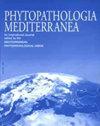假单胞菌CHA0和β-氨基丁酸诱导小麦对小麦Puccinia triticina抗性的组织病理学研究
IF 1.9
3区 农林科学
Q2 AGRONOMY
引用次数: 1
摘要
在感受到特定的生物或非生物刺激后,如根细菌或选定的化学物质定殖根系,植物可以增强对病原体的基本抵抗力。由于其可能的可持续性,这种诱导的抗性将对农业中的疾病管理有价值。本研究检测了假单胞菌蛋白CHA0(CHA0)和β-氨基丁酸(BABA)诱导的小麦叶锈病(Puccinia triticina)的抗性。CHA0种衣剂减少了叶片上有孢子的脓疱的数量,抗性表现为坏死或褪绿的叶斑。CHA0对小麦幼苗的生长有明显的促进作用。BABA在10、15或20 mM下进行测试,在20 mM时观察到叶锈病感染的剂量依赖性减少,保护作用最大。然而,BABA处理在20 mM.平衡BABA对植物生长的影响及其保护能力,选择15 mM的化合物适合保护小麦幼苗免受叶锈病的影响,对营养寄主生长的影响最小。对病原体感染过程的组织学方面进行了研究,以了解观察到的耐药性背后的机制。预进入过程不受两种抗性诱导剂的影响,但两种处理都减少了真菌的穿透和吸器的形成。细菌或化学诱导后,抗性反应的时间和幅度不同,导致抗性水平不同。在宿主组织的真菌定殖过程中,CHA0-和BABA处理的植物中胼胝质的高沉积和H2O2的积累表明了对抗性的重要贡献。本文章由计算机程序翻译,如有差异,请以英文原文为准。
Histopathological aspects of resistance in wheat to Puccinia triticina, induced by Pseudomonas protegens CHA0 and β-aminobutyric acid
After perception of specific biotic or abiotic stimuli, such as root colonization by rhizobacteria or selected chemicals, plants can enhance their basal resistance against pathogens. Due to its likely sustainability, this induced resistance will be valuable for disease management in agriculture. This study examined resistance against wheat leaf rust (Puccinia triticina) induced by Pseudomonas protegens CHA0 (CHA0) and β-aminobutyric acid (BABA). Seed dressing with CHA0 reduced the number of sporulating pustules on leaves, and expression of resistance was visible as necrotic or chlorotic leaf flecks. Beneficial effect of CHA0 on wheat seedlings growth was observed in when they were challenged or not with leaf rust. BABA was tested at 10, 15 or 20 mM, and a dose-dependent reduction of leaf rust infections was observed with greatest protection at 20 mM. However, BABA treatment repressed plant growth at 20 mM. Balancing the BABA impact on plant growth and its protective capacity, 15 mM of the compound was selected as suitable to protect wheat seedlings against leaf rust, with the least impact on vegetative host growth. Histological aspects of the pathogen infection process was studied to understand mechanisms of behind the observed resistance. The pre-entry process was not affected by the two resistance inducers, but both treatments reduced fungus penetration and haustorium formation. Timing and amplitude of the resistance reactions were different after bacterial or chemical induction, leading to different levels of resistance. During fungal colonization of host tissues, high deposition of callose and accumulation of H2O2 in both CHA0- and BABA-treated plants indicated important contributions to resistance.
求助全文
通过发布文献求助,成功后即可免费获取论文全文。
去求助
来源期刊

Phytopathologia Mediterranea
生物-植物科学
CiteScore
4.40
自引率
8.30%
发文量
28
审稿时长
6-12 weeks
期刊介绍:
Phytopathologia Mediterranea is an international journal edited by the Mediterranean Phytopathological Union. The journal’s mission is the promotion of plant health for Mediterranean crops, climate and regions, safe food production, and the transfer of new knowledge on plant diseases and their sustainable management.
The journal deals with all areas of plant pathology, including etiology, epidemiology, disease control, biochemical and physiological aspects, and utilization of molecular technologies. All types of plant pathogens are covered, including fungi, oomycetes, nematodes, protozoa, bacteria, phytoplasmas, viruses, and viroids. The journal also gives a special attention to research on mycotoxins, biological and integrated management of plant diseases, and the use of natural substances in disease and weed control. The journal focuses on pathology of Mediterranean crops grown throughout the world.
The Editorial Board of Phytopathologia Mediterranea has recently been reorganised, under two Editors-in-Chief and with an increased number of editors.
 求助内容:
求助内容: 应助结果提醒方式:
应助结果提醒方式:


